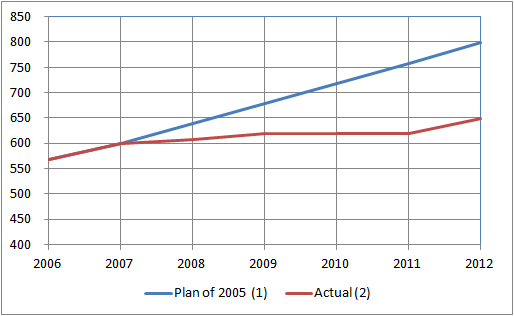|
Gazprom was unable to
provide contracted gas flows to Europe during a period of extremely
low temperatures in the South European Russia. In the period from
February 1 to 6, 2012, the flow via the Yamal-Europe pipeline to the
Mallnow terminal at the Polish-German border was 31% lower than in
the same period of 2011. The drop of the flow from Ukraine to
Slovakia (Velke Kapusany) is reported at 43%, though it was much
warmer in Europe in the early February 2011 than now.
In my view, the failure
was caused by the combination of the three following factors.
1) The cold
period in Central and South European Russia coincided with the
presidential election campaign. Gazprom could not reduce supplies to
Russian consumers as it usually does.
2) Gazprom has made a
strategic mistake by abandoning its gas storage expansion program
for 2005-2010. By January 2012, the maximum daily storage withdrawal
rate was about 150 mmcm lower than planned. Moreover, the drop of
demand in 2009-2010 gave a very good opportunity for injecting large volumes
of cushion gas into the new storage facilities, but Gazprom did
nothing.
Figure
1. Planned and Actual Maximum Daily Storage Withdrawal Rate, mmcm

(1) Estimations based on
Gazprom report; (2) Gazprom reports.
3) Gazprom has sharply
reduced the procurement of Turkmen gas. Russian regions bordering
Kazakhstan need to replace about 100 mmcm/day of Turkmen gas by gas
from West Siberia.
There is not enough gas
to fill up export pipelines, though the latter have a substantial
spare capacity. The commissioning of the Bovanenkovo-Ukhta pipeline
later this year will not improve the security of European exports.
The bottleneck will be solved when the Ukhta-Gryazovets pipeline is
commissioned.
Mikhail Korchemkin
East European Gas
Analysis
Malvern, PA, USA
February 14, 2012
|